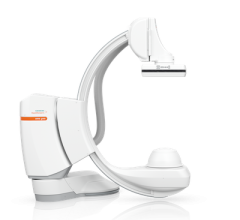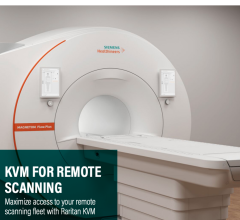
Greg Freiherr has reported on developments in radiology since 1983. He runs the consulting service, The Freiherr Group.
BLOG: Why Image Transfer Needs To Be Electronic

Image courtesy of Pixabay
When time matters, the need for fast and reliable image transfer is obvious.
Eliminating compact disks (CDs) from the image sharing process can save 25 critically important minutes in trauma cases, according to statistics gathered by Ambra Health.
“These can be life-saving minutes,” said Morris Panner, CEO of the New York City-based company, which provides solutions for medical image sharing among patients, physicians and hospitals.
Urgent patient cases demand “information that arrives fast and smoothly,” Panner noted. That excludes the use of CDs, he said, because these storage media often are transported along with patients traveling by ambulance from one provider to another. Precious minutes may be lost, if image interpretations must wait until after the patient arrives at the medical facility. But more than just 25 minutes are at stake.
“Sometimes you have to repeat a study altogether,” he said.
This is because the ability to download images from CDs is anything but certain. The disk may be scratched, bent, even lost in transit. The data may be corrupted. There may be formatting problems. Or the facility may not be able to de-crypt the images on the disk.
“CDs are not designed to interoperate,” Panner said. “If you take a CD from one system to another, you’re asking for trouble.”
Duplicate radiological studies might have to be performed to make up for results that cannot be viewed. This can lead to financial costs; time delays; patient inconvenience; delayed treatment; even additional radiation (if the necessary test requires it).
Images transferred electronically are not vulnerable to such issues. And the process for electronic transfer has been proven many times.
Patients using Ambra Health to transfer their images electronically sign a consent form after an exam at a facility. Clinical images from the exam are then sent through a secure access link to the patients or their physicians. The transfers take seconds each. And their transfer may be only the first step.
Other clinical data may also be transferred electronically. Together with images, these data form a digital snapshot of the patient.
Ensuring Interoperability
Using Ambra software that serves as “gateways,” institutions may transfer images and other data externally to allied facilities or internally throughout their enterprises. The Ambra software and other technologies help ensure interoperability among the sites to which the data are transferred.
“We have invested an enormous effort in vendor neutral transmission to create a vendor neutral data package that can be integrated into an electronic medical record,” Panner said.
Although some proprietary “tagging” may be involved, Ambra Health has based its technologies when possible on standards, such as DICOM for images and HL-7 for other types of patient data. “If you are able to manage the imaging and (radiology) reports, you are handling a large proportion of the useful data today,” he said. “And you have made a massive difference in the lives of patients.”
In the future, Ambra technology could serve as the foundation for solving interoperability issues stemming, for example, from different capabilities of the groups involved. An elderly patient, for example, may not be as technologically savvy as a millenial fresh from medical school. Future technologies must account for this, Panner said.
The technologies built to smooth the transfer of data between two such groups, therefore, might be tailored to suit the specific needs of those two. Extending this concept would allow patient images and other data to be transferred electronically among providers, including hospitals and physician offices, as well as to and from patient homes.
Being Tech Savvy
Although physicians and patients may share the need for reliable image transfer, they may differ substantially in their ability to use technology. Having been exposed to modern technology throughout their schooling, millennials, for example, may feel comfortable with advanced tools. Elderly and homebound patients, on the other hand, may not. (Some could suffer a modern form of the “blinking VCR clock” that plagued a previous generation.)
Similar issues may arise independent of age. For example, a need might be met by providing images and radiology report to specialists who are familiar with radiology reports. But that need won’t be met if the recipients of those reports are not familiar with the jargon in the reports. This would be true for physicians as well as patients.
“I think what is becoming clear is that the patient journey spans many institutions, many different specialties, many different ‘ologies.’ And we need to be able to interoperate between and among all of those,” Panner said. “If you can’t do that, you are cutting out parts of the patient record from the patient view; you are putting up unnecessary logistical barriers to patient care.”
Editor’s Note: This is the first in a blog series about image sharing. The next blog will address how technology might be customized to fit the needs of different groups.
Related content:
BLOG: Why You Should Not Use CDs To Transfer Patient Images
Webinar: HIMSS Webinar: Healthcare Trends to Watch for in 2020


 December 01, 2025
December 01, 2025 









